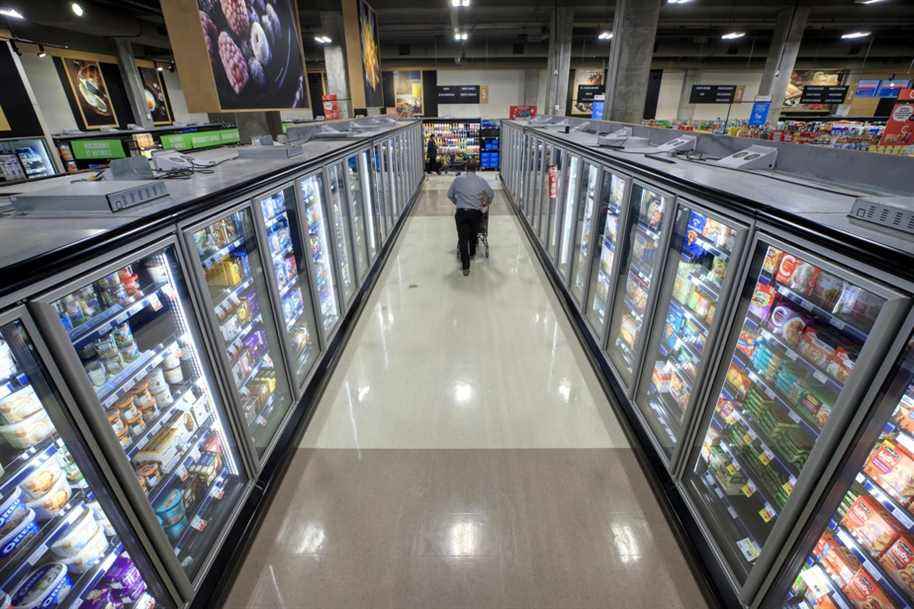The allocation by Quebec of offset credits for the destruction of halocarbons within the framework of the carbon market is inefficient and counter-productive, deplores a very critical report by the Trottier Energy Institute of Polytechnique Montreal.
Posted at 5:00 a.m.
These cooling gases used in particular in refrigerators, freezers and air conditioners are powerful greenhouse gases (GHG), whose impact is 1,000 to 11,000 times greater than carbon dioxide (CO2).
Their destruction at the end of their life is already mandatory, but their leaks, mainly from commercial systems – which are less airtight than factory-assembled residential appliances because they are assembled on site and include a lot of piping whose joints are as many potential leak points – are significant sources of GHG emissions.
To promote their replacement by gases less harmful to the climate, the Ministry of the Environment and the Fight against Climate Change (MELCC) grants in exchange for their destruction offset credits recoverable on the Quebec-California carbon market.
Companies that have voluntarily destroyed halocarbons sell the credits thus obtained to other companies, which avoids the latter having to reduce their own GHG emissions by the same amount.
However, all the credits granted to date have been for the destruction of halocarbons of the CFC family (for chlorofluorocarbons), among the most harmful, which are in any case prohibited in Quebec, noted the authors of the report. It is indeed forbidden to fill a device with CFCs since 2013 and it is forbidden to operate a device with CFCs since 2020.
These gases would therefore have been eliminated even without a financial incentive, so that the offset credits obtained for their destruction “did not allow any reduction in GHGs”, explained to The Press one of the authors, Florian Pedroli.
Companies are given the right to issue [des GES] assuming that emissions have been avoided, when they have not been avoided. In the end, we increase emissions.
Florian Pedroli, from the Trottier Energy Institute
“Questionable” calculation
The calculation of GHG emissions avoided by the destruction of halocarbons is also “questionable”, says the report, which is surprised that the data used to define the replacement gases for halocarbons eliminated come from California, while the climate is distinctly different there than in Quebec.
The calculation of leaks also varies according to the substitute gas, while “the leak rate does not depend on the gas, but on the maintenance of the device”, underlines Florian Pedroli.
Worse still, some substitute gases have a global warming potential (GWP) – that is to say the index which puts the climate impact of a gas into perspective – higher than the one being replaced, is surprised the searcher.
I have the impression that the regulations, at the base, were to limit the impact on the ozone layer [davantage que l’impact sur le réchauffement climatique].
Florian Pedroli, from the Trottier Energy Institute
1% of Quebec emissions
Federal law requires cooling systems over 20 kilowatts (kW) to be leak tested annually and any leaks discovered to be sealed.
Despite this, the leaks from these devices total 0.9 megatonnes of carbon dioxide equivalent (Mt eq. CO2) per year, in Quebec, or just over 1% of the province’s total GHG emissions, the report calculates.
Such an emission level deserves a wider reflection than the simple substitution by less impacting gases to remedy it.
Excerpt from the report of the Trottier Energy Institute
In addition, the allocation of offset credits has the potential to drain towards Quebec halocarbons recovered elsewhere in Canada, the report worries.
“If we destroy halocarbons from British Columbia, it has an impact in British Columbia, but in no way in Quebec, illustrates Florian Pedroli. As long as British Columbia is not part of the carbon market, there is no reason for its gases to qualify for a credit. »
Shortage of reservoirs
The allocation of offset credits for the destruction of halocarbons has attracted new players in the industry, notes Alain Girard, a refrigeration specialist who has worked in the field for forty years and who co-authored the report.
“It’s not the gases from the systems that are still working that they take, they take the systems at the end of their life, systems that in one way or another would have been dismantled,” he explains. .
It is unacceptable, it is illegal and it is misrepresentation.
Alain Girard, haloCAREbure Generation
The situation offends him all the more since the destruction of halocarbons is already financed by eco-fees charged on purchase, in Canada.
According to him, this profit motive would explain the shortage of large-capacity gas reservoirs, because companies would store halocarbons to profit from them later on the carbon market.
“These people are not reducing GHGs, they are adding to them,” he insists. It is an industry that produces GHGs. »
The history of halocarbons
Before the 1930s, the main refrigerants used were sulfur dioxide, ammonia and carbon dioxide, but these posed a health hazard in the event of a leak, recalls the report of the Energy Institute Trotier. They were then replaced by the first halocarbons, synthetic gases now widely used not only in cooling systems, but also in insulating foams, as a blowing agent, and in aerosols, as a propellant. Halocarbons have the advantage of being non-flammable and harmless to humans, but they deplete the ozone layer and contribute significantly to global warming. The three main families of halocarbons are chlorofluorocarbons (CFCs), hydrochlorofluorocarbons (HCFCs) and hydrofluorocarbons (HFCs).
Learn more
-
- 10,900
- Global warming potential of CFC-12 gas over 100 years, which means that one kilogram of this gas has 10,900 times more climate impact than one kilogram of carbon dioxide (CO2)
SOURCE: TROTTIER ENERGY INSTITUTE

